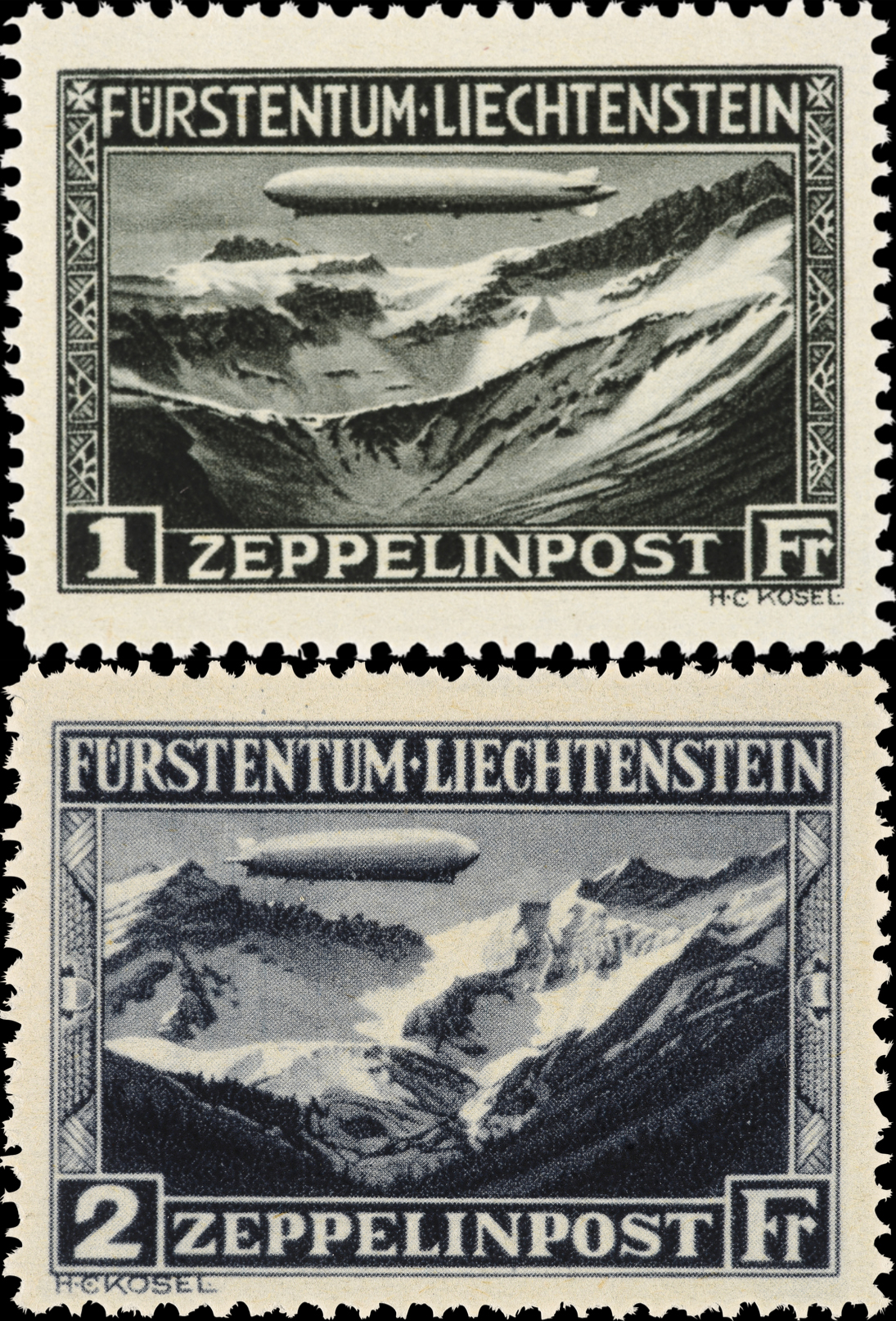
While there is still snow on the mountains, I wanted to show these stamps with a zeppelin – more precisely the airship LZ127 “Graf Zeppelin” – crossing the snow-covered mountain peaks of Liechtenstein. The stamps are special in that they are the first to feature zeppelins on Liechtenstein stamps and could only be used for transportation in a zeppelin. There was a 1 FR black-grey-green stamp for postcards (33,500 stamps) showing the airship over the Malbuna Valley. On the other hand, the same airship travels over the Samina Valley on the 2 FR stamp (27.800 stamps) “in black-blue”. Both stamps were designed by Hermann Clemens Kosel, printed in halftone intaglio at Wiener Kunstdruck AG in sheets of 5×10 stamps each and have a perforation of 111/2.
What is special about these two stamps is that they were only valid for postage on a single Zeppelin voyage. The letter shown here is also from this voyage. This letter and all mail items franked with these stamps were stamped in Vaduz with one of five black Vaduz town postmarks and a red special postmark with the imprint “Vaduz June 1931 Zeppelin mail to Lausanne”. A total of 5 different Vaduz town postmarks were used, 3 of which were actually no longer in use. This is also the case with the wheel-gear postmark used on this letter – Austrian type – code letter “b” with a partially broken-off upper segment. This is probably the reason why three Vaduz town postmarks show an end of their validity on 10.VI.31.
 A total of 7,145 airmail cards and 6,697 airmail letters were transported on this trip. During the voyage over Liechtenstein, the zeppelin stopped over Schaan airfield. The mailbags filled with the postal items were hung on ropes and pulled into the zeppelin before it continued on to its destination in Lausanne. There, each item of mail was then stamped “Lausanne Poste Aérienne Suisse 10.Vi.31 – 13” and forwarded on to its destination.
A total of 7,145 airmail cards and 6,697 airmail letters were transported on this trip. During the voyage over Liechtenstein, the zeppelin stopped over Schaan airfield. The mailbags filled with the postal items were hung on ropes and pulled into the zeppelin before it continued on to its destination in Lausanne. There, each item of mail was then stamped “Lausanne Poste Aérienne Suisse 10.Vi.31 – 13” and forwarded on to its destination.
- Letter from S. Danler
- Literature: wikipedia and RLS-Mitteilungen Nr.1 – März 2013
